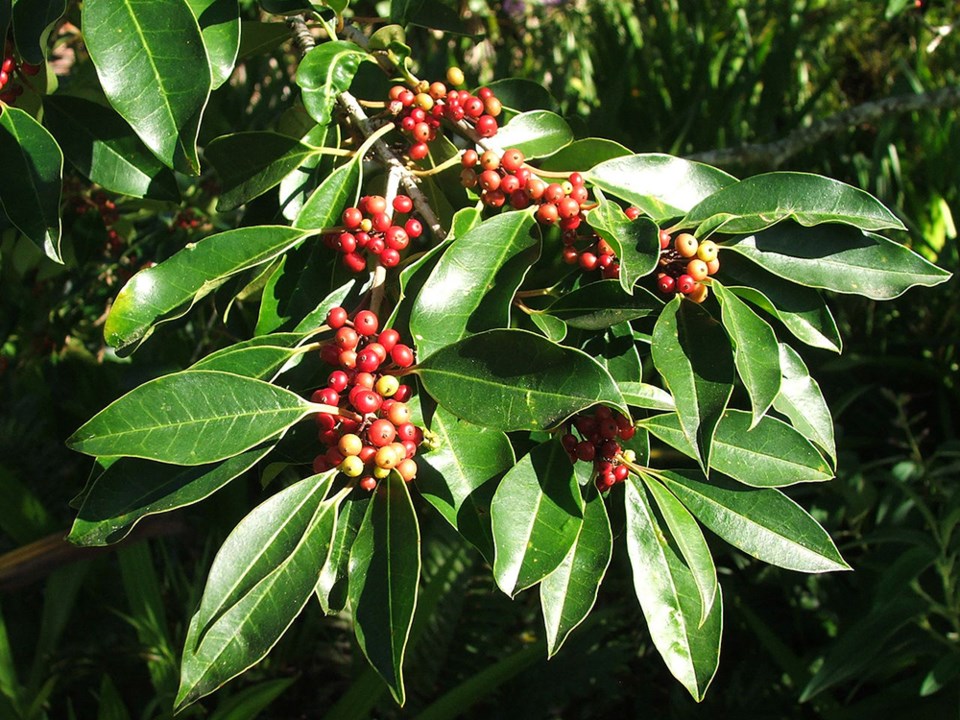Many of us don't have space anymore for a holly tree in the garden, but holly is still a lovely traditional decoration at Christmas and a great wildlife tree all through winter.
Just before hibernation, hungry bears take a break from raiding bird feeders and paw around under trees for fallen holly berries. Later, in January when berries are sweetened by frost, birds flock into holly trees and gobble berries for days. Deer eat them also when there's no other food.
Southwest B.C. has a perfect climate for growing holly. This easy-tempered tree likes any average soil, which isn't swampy. It also handles sun or shade though produces more berries in sun. Berries come from female trees. The males are pollinators only.
Seedling hollies often pop up in gardens thanks to birds, but it's a gamble to keep any around hoping you'll end up with free holly trees and lot of berries. Many self-seeding hollies are males.
The way to tell the gender is to take a magnifying glass in May and look deep into one or two clusters of the small, white holly flowers. The females have a tiny knob deep in each flower centre, while males just have stamens.
But holly pollination problems seldom happen. Very often people are thrilled when a baby holly appears in their garden. By the time they've clued in that it's a male and will never have berries, it's too big to move.
The link between holly and the winter solstice dates back to pagan Europe, then Roman times, when holly was believed to protect houses from lightening and evil spirits. Later, the Christians saw the red berries as drops of blood and the evergreen leaves as eternal life.
But holly berries aren't always red. An occasional tree has yellow berries: sometimes rich golden, other times almost white. Among the bright-berried Christmas type hollies there are two main kinds: the English holly (Ilex aquifolium) and the American holly (Ilex opaca). American holly is a little hardier than English holly.
There are about 400 holly species. One sometimes seen here is the Winterberry (Ilex verticillata). The female is thickly covered with tiny brilliant red berries in winter. It's deciduous and only grows to about four metres.
It's best to be sure to grow a male Winterberry as well as the berry-making female. It's not grown commonly enough to rely on male trees being nearby.
Many hollies are very useful trees. The wake-you-up herb tea yerba mate is made from a Paraguayan holly while a North American holly (Ilex vomitoria) has been used as a purgative.
Berries aren't all hollies have to offer. There are gorgeous variegated holly males such as “Silver Queen” and “Golden Queen.” Yes, these are males. There's also another called “Golden King.” This is a female.
Another, alternative holly is the porcupine holly. This can be gold-variegated or silver-variegated and gets its name from the sharp bristles on the leaf surface and spines on leaf edges. Both are males and would have to be propagated by cuttings – a very slow process.
Small space gardeners might find compact hollies interesting. The “Blue Holly” series contains very hardy hollies that, like all hollies are extremely slow-growing.
Anne Marrison is happy to answer garden questions. Send them to her via [email protected]. Please include the name of your city or region.



